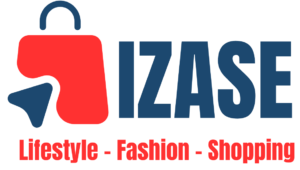Introduction
In today’s digital age, social media engagement is key for individuals and businesses alike. Whether you’re looking to grow your personal brand or boost your company’s online presence, increasing social media engagement can have a significant impact. In this comprehensive guide, we’ll explore effective strategies to help you boost your social media engagement overnight.
Understanding Social Media Engagement
Social media engagement refers to the interactions, reactions, and responses your content receives on social platforms. This includes likes, comments, shares, retweets, and direct messages. Higher engagement indicates a more active and interested audience, which can lead to increased visibility and reach.
Relevance and Importance
Boosting social media engagement is essential for several reasons:
- Audience Connection: Engaging with your audience builds trust and fosters a sense of community.
- Algorithm Favorability: Social media algorithms often prioritize content with higher engagement, increasing its visibility.
- Brand Awareness: Increased engagement exposes your brand to a wider audience, improving brand recognition and awareness.
Types and Categories
- Content Strategy
- Definition: Crafting compelling content tailored to your audience’s interests and preferences.
- Tips:
- Identify your target audience and their interests.
- Create diverse content formats, including videos, images, polls, and stories.
- Use storytelling to evoke emotions and connect with your audience on a deeper level.
- Engagement Tactics
- Definition: Implementing strategies to encourage audience interaction and participation.
- Tips:
- Ask questions in your captions to prompt responses.
- Encourage users to tag friends or share your content.
- Respond promptly to comments and messages to foster meaningful conversations.
- Community Building
- Definition: Cultivating a loyal and engaged community around your brand or content.
- Tips:
- Create branded hashtags to facilitate community engagement.
- Host live Q&A sessions or virtual events to interact directly with your audience.
- Collaborate with influencers or other brands to reach new audiences and foster engagement.
Symptoms and Signs
- Low Engagement Metrics: Notice a decline in likes, comments, or shares on your social media posts.
- Limited Reach: Your content is not reaching as many users as expected, indicating low engagement levels.
- Lack of Interaction: Fewer interactions and conversations are occurring on your social media profiles.
Causes and Risk Factors
- Irrelevant Content: Posting content that does not resonate with your audience or address their interests.
- Inconsistent Posting Schedule: Irregular posting can lead to decreased visibility and engagement.
- Failure to Respond: Ignoring comments, messages, or mentions can deter audience interaction and engagement.
Diagnosis and Tests
- Content Audit: Assess the performance of your past content to identify trends and patterns.
- Audience Feedback: Gather insights from your audience through surveys, polls, and direct messages to understand their preferences and expectations.
Treatment Options
- Content Optimization: Tailor your content to address your audience’s interests and preferences effectively.
- Engagement Strategies: Implement tactics to encourage audience interaction and participation, such as contests, challenges, and user-generated content campaigns.
- Community Engagement: Foster a sense of community around your brand by actively engaging with your audience, responding to comments, and acknowledging user-generated content.
Preventive Measures
- Consistent Posting: Maintain a regular posting schedule to keep your audience engaged and informed.
- Quality Over Quantity: Prioritize quality content that adds value to your audience’s lives over quantity.
- Continuous Monitoring: Monitor your social media metrics regularly to identify trends and adjust your strategy accordingly.
Personal Stories or Case Studies
Sarah’s Success Story: Sarah shares how she doubled her social media engagement by implementing a consistent posting schedule, engaging with her audience authentically, and experimenting with different content formats.
Expert Insights
Social media strategist John Smith emphasizes the importance of authenticity and consistency in driving social media engagement. He advises brands and individuals to focus on building genuine connections with their audience and delivering value through their content.
Conclusion
Boosting social media engagement requires a strategic approach encompassing content strategy, engagement tactics, and community building efforts. By understanding your audience’s preferences, actively engaging with them, and consistently delivering high-quality content, you can enhance your social media presence and drive meaningful interactions overnight.


